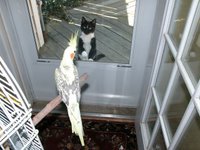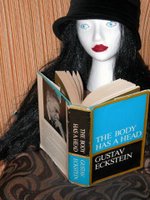Roger Frock’s Changing How the World Does Business
Roger quotes Emerson: "It is a lesson which all history teaches wise men; To put trust in ideas and not circumstances."
"In truth, the mature plan for the Federal Express services, as with most creative ideas, did not spring forth fully conceptualized. It was in fact inspired by a series of events that over time contributed to the concept’s evolution." (13)
"At this point, I could not help but marvel at the twists and turns that ultimately affect our lives; the events and people that shape us in ways that we seldom appreciate and never clearly understand." (30)
I have the privilege of knowing Roger Frock, as a friend and fellow student of Spiritual Philosophy, and I’m delighted to have read his new book. I read it over the Thanksgiving holiday during my trip home to Memphis, where our family gathers for the occasion, and this was a perfectly fitting context to appreciate the creation of FedEx. The FedEx hub and those airplanes with the signature purple and orange are omnipresent to anyone who goes near the Memphis airport, and we all have fresh memories of the sound of FedEx planes in their flight patterns over our parents’ old house, like clockwork – predictable as metronomes.
It is a pleasure to read about the personalities that went from ideas born of passion to create, to persistent problem-solving of every kind as they worked tirelessly together to succeed. When Roger writes about Fred Smith’s thanking the small staff, after their move to Memphis, for their dedication to his dream, he offers a clear sense of the spirit of unity, cooperation, commitment, and excitement that was so obviously part of the creative energy of this group. Roger captures this image early:
"Thus was born the company mantra, the lodestar, the guiding ideal, and the primary foundation of the corporate culture at Federal Express – motivated people working together to produce exceptional service for customers who would provide revenues to produce profits. The genesis of the cultural vision was beautiful in its simplicity, it was motivational, and it was accurate – People-Service-Profit, the trinity of cyclical action." (67)
Roger’s book is a great read, and for many more than entrepreneurs with big dreams. This is a roadmap of how people with good ideas and the passion to create from those ideas can really influence the way we all experience our world. Roger really shows how the "purple-blood" attitude and loyalty to creation (ideas-becoming-reality) is a human response that reveals the best in us as people. Knowing Roger, having known many employees of Federal Express, and appreciating the persistence and joy of creating more and more, I agree with Charles Lea’s assessment that "…I felt that finally the right man had stepped forward to chronicle this dramatic bit of business history." Roger was the operational guide, and he obviously did his homework every inch of the way in playing this important role. His excitement and appreciation of the experiences they all shared are obvious, too, and it’s a gift to readers to be able to share the journey in this way. We get all the benefits without the long nights and cliff-hangers. Thanks for writing this important book, Roger. Yours is a great addition to the annals of creative stories, particularly for people with innovative ideas.
Gulley Jimson and I used to be best friends, even though he is made-up. Wayward human and color appreciator,he is a main character in Joyce Cary's novel trilogy,one of my favorites. Irish Joyce Cary studied to be a painter, served in the British military and civil service in West Africa (where I grew up). William Blake, intoxicating painting, a complete devotion to color and the creative passion, and a disregard for pennies and those without appetites - how could I not acknowledge these roots?
Wednesday, December 13, 2006
Tuesday, November 14, 2006
Roger Frock's New book
Sunday, June 18, 2006
Enjoying
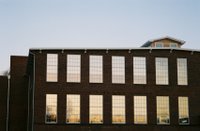
 A few I took of the nearby Saxapahaw Rivermill, now renovated.
A few I took of the nearby Saxapahaw Rivermill, now renovated.Just a few notes: I’ve been reading Anderson Cooper’s Dispatches, and for this day, designated “Father’s Day,” I’ll repeat his dedication: “To my mom and dad, and the spark of recognition that brought them together.”
I hope many, many more will continue to read his book. He juxtaposes his internal recording of events in his life with events in the world, particularly ones that he is drawn to, engages himself in, and his is a clear example of how our mind will open to the emotions, the love within us, if we let it – even if we are not consciously seeking that emotional awakening.
Other wonderful experiences to note:
http://Art in Motion
After Kathy Oddenino’s Retreat at the Rigmor House from Sept. 9-11, I was able to see Art in Motion at Weaver Street in Carrboro. I had seen this show advertised, beginning at Siglinda’s garden, but had not yet seen the show. The show was performed on the lawn at bustling Weaver Street early Sunday evening, and in the midst of all of our eating, walking, cell-phone talking, horns blowing, dogs barking, children sleeping or dancing, I had an intermittent view of their interpretation of “art in motion.” It was a rare treat. Leaving, I got to speak with the composer of the music, one of the visitors from Italy, and his passion for the creation was one more added joy. They read and read and read, poets, philosophers – many, he said, and all collaborated on the text of the moving poetry. The shows are changed to fit the venue, the garden, the air, and energy. CDs are available. I’m still imaging those two women and their dancing in the cloud of fabric, the stretching and struggle of birth, the amazing energy of creation. And the way the colors were painted on, both the canvas and their fabric skirts.
Tuesday, May 09, 2006
Art in the Garden in Hillsborough


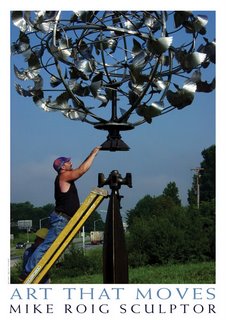
I went with a friend to walk through the sculpture garden "tour" in Hillsborough last Saturday. It was a beautiful day, and neither of us had been to this spot before. We found out that this particular "tour" has gone on annually for 12 years, and is held at the home of one of the sculptors (Tinka Jordy, sculpture in the photo). Tinka Jordy creates these beautiful statues whose skin of clay seems layered together, and whose forms and placement in relationship to each other and to the land, or trees, or water, seem absolutely natural. She has also made these torches - my favorites were the ones called "Earthlinks," which are shown in the photo. I thought of them like candles on this birthday cake of Earth. I really like them.
I hope you'll visit the artists and look for their work.
Talking to a few of the artists: what a treat to walk in the garden on such a day and come upon art made in such a way. Bypassing the galleries, one said, helps us to meet those who are interested in the art, who may see it and buy it and be able to envision it where they live. We can even deliver it sometimes, and see where they would like to put it. This is Art Appreciation without any "middle man" - grateful for galleries as we/they are.
Here is how the artists present themselves and their work:
Garden Art Gallery is a juried art exhibition created by artists... to communicate with one another and allow ourselves to exhibit and share our work with the worldwide community on the internet. We provide links to artists whose work is appropriate for outdoor installations... Sculpture that will withstand rain and sun... Art that is intended to be shared with those that walk or ride by... whether it is installed in a public setting or tucked into a small garden...
... Art in the garden can be formal... or completely whimsical. Gardens and public spaces are about discovery...It's always a pleasure to find a large sculpture serving as a focal point in a public space... or to walk down a small garden path and happen upon an intriguing new plant... or an unexpected sculpture tucked in a small niche... This year you may even see wood elf dancing in the pines!
For a look at all of the artists - Garden-Art
Photos by Catharine Carter
Images of Tinka Jordy's sculpture from her site
Tuesday, March 28, 2006
The Constant Gardener (Value the Human Beings that Do The Work Too)
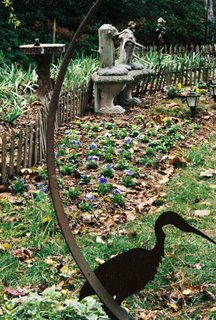
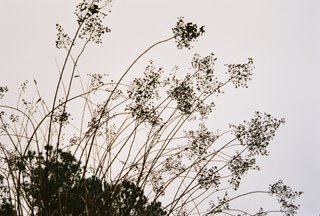
Recently I read an editorial by Constance Casey published in the NY Times. Casey was a Parks gardener in NY for 5 years, and writes about gardening for Slate. After I read the recent editorial, I looked her up and read a few more of her articles. The first editorial was called, The Grass Station, written in Feb. after President Bush's State of the Union address in which he said (as she quotes) that swtich grass would be one of our ways to "make our dependence on Middle Eastern oil a thing of the past." Hers is a great editorial, and a reminder to me about the profound difference in focusing on the "amber waves of grain" and all they hold (infinity in a grain of sand, as William Blake wrote), and the conflict of competition for resources and power, in whatever form the struggle takes.
I love tulips. I bought a few recently for a "side piece" which made me think of miniature peonies, a subtle pink and white. Here is what Constance Casey wrote in a piece about tulips: "Tulips are supposed to come back because they're bulbs, which are essentially nice, fat packages of food stored for the future plant. It's not that tulips are finicky, it's that they need the conditions in which they evolved."
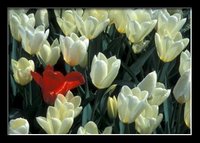
Photo by Margret Maria Cordts
Tuesday, February 28, 2006
Tipping Points
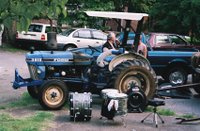
Malcolm Gladwell
The picture has nothing to do with M. Gladwell's book. Just a personal tipping point. :) I've been reading Malcolm Gladwell's first book, The Tipping Point: How Little Things Can Make a Big Difference (2000). I bought the book a year or more ago and eagerly read about the first half before it got shuffled in my bedside stack and overrun with others. Something reminded me of it again recently and I unearthed it. This book is really making me think about how we create neural connections in our brain, and why we do what we do with them, or not. I realize more and more how locked in we are in our thinking processes - I have images of a recent Holiday Inn Express ad I saw, in which a clown reassures a rodeo rider straddling the bull and ready to leave the gate - just lean back and hang on. The rider is reassured and gives a nod to the role of the rodeo clowns in keeping it all together, then learns that the clown is a birthday party clown who stayed at a Holiday Inn Express. Find the link or bridge between why I thought of this ad when thinking of how locked in we are to our thinking processes, and you will have entered the Wonderland of my World.
The Tipping Point is indeed a great intellectual adventure story, as M. Gladwell calls it. And I love great intellectual adventure stories. To me all true intellectual explorations are adventures. Studying the difference between internal and external focuses of thinking, and the amazing phenomenon of once we recognize a pattern, the pattern begins to "appear" everywhere we look, validates again the fact that we are reflective beings. Understanding the world around us in a different way than we may have already thought means we have opened our way of understanding ourselves into new pathways. We may not necessarily be conscious of doing this - of deciding to change our thinking - at first, but we feel the excitement of the change, and this prompts us to do it, more and more, and more consciously.
Gladwell has some great case studies in the book. I'm definitely thinking about my own patterns of thinking and doing and feeling, and feeling the urges and surges of starting my own "positive" epidemic, as he writes, is a thrill. Add to that the thrill of the infinite sensory experience we open our minds to as we learn to love these processes of creation, and wow...that's what I call a Big Bang.
A note to think about:
"As human beings, in other words, we can only handle so much information at once. Once we pass a certain boundary, we become overwhelmed. What I'm describing here is an intellectual capacity - our ability to process raw information. But if you think about it, we clearly have a channel capacity for feelings as well." (176)
We have a lot of ways to illustrate how we have defined our environment, based upon our perception. These illustrations can be markers for us to break down some walls, once we know the blueprint of how we built the shelters, buildings, bunkers, skyscrapers, gazebos in our mind.
Quotes and other links:
"Kant had said that it was Nature herself, and not the mathematician, who brings mathematics into natural philosophy." On Growth and Form, D'arcy Wentworth Thompson (1961).
Another book I'm reading:
A novel called The Brief History of the Dead by Kevin Brockmeier.
Inside the flyleaf: 'Remember me when I'm gone' just took on a whole new meaning.
Tuesday, February 14, 2006
The Bare Essentials
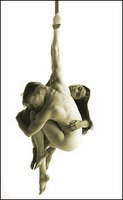 photo by John Kane
photo by John Kane
The Bare EssentialsI read an interesting article in the NYTimes online yesterday, about “naked” and “nude” and dancing. The article is by Gia Kourlas. Check it out. How we feel about flesh and skin. The article conjures up all sorts of images, prompted by both the dancers’ and audience experiences. I appreciate the beauty.
This makes me think of a book I was given recently: Always a Woman, by Kaylan Pickford. "We are vulnerable and are easily led away from our real selves. Illusion beckons." In physical terms, I have never been "pretty," or, particularly "ugly" - I have only thought of these qualities in physical ways when prompted by physical comparisons to others. More often now I think of "pretty" and "ugly" as qualities of character, energy, levels of refinement, finesse, manners, or a lack of them. I have been very ugly at times (remember that Alberta Hunter line about "a horse with a hat on"?) - and have known many levels of these within me, just as I have recognized whole spectrums within others. I've been both clumsy and coordinated, in thinking, speech, and movement. Grace is as grace does, I'm learning, as I age, and remember. On Sunday, in Kathy Oddenino's seminar, "Love as the Secret of Happiness," I thought about all of the energy I have put into my beliefs - about myself, life, others - and how this shows me I have been loyal to my beliefs, even as I struggled with them (and thought this was love), not loyal to or truly loving of myself. Kaylan Pickford wrote, "I love love stories. I think everyone loves a love story, most of all their own."
Here is my bit:
Close as a breath
To the crystal balls
We still want to read
Our past in our futures,
And our present is cloaked, too,
Sometimes simply symbolized.
I see the lines around my eyes
And my skin changing colors-
I no longer simply wonder
So much as smile, marvel
At this divine machine.
The Bare Essentials of Dance
Monday, February 06, 2006
Pleasures
Renee Oldstead
Renee Oldstead (my friend Chris turned my head to Renee a long time ago, with a nod to Eva Cassidy)- I've been listening to her CD, and Summertime, and....Let me just say, you don't know what you're missing. I am loving every note.
Other Arts:
Raoul Dufy (1877-1953).
Since I read his name in something by Gertrude Stein so many years ago, I have been drawn to some of his paintings and patterns. Some yes, some no. He has certain "motifs" that appear in his paintings, as, I think, symbols of what mean so much to him in his internal life. He does this in a way that makes perfect sense to me - i.e., I relate easily to his way, and find I know him much better and easily as I make my way through his paintings. It is like coming to know a friend intimately, without benefit of holding his hand. His uses of lines, and of color, and the particular ways they are "his," are wonderful. If you're not familiar with him and his work, take a look sometime, if only by book. He painted, made costume sets, woodcuts, all sorts of things. There is a lot more "there" than only the graphic-style representations that may be more familiar.
I checked out a book recently from the library and have been perusing these paintings again, the first time for a long while. Note the colors - that exquisite blue, in "Nogent-sure-Marne" (1934). Even in print. They are fascinating studies of character, place, and memory, to me.
My neighbor just knocked on my door to tell me he is the one who knocked my mailbox off last night - ice on the truck windshield. We shook hands, and he apologized in a very gentle voice, offering all. What a nice punctuation to end....
Renee Oldstead (my friend Chris turned my head to Renee a long time ago, with a nod to Eva Cassidy)- I've been listening to her CD, and Summertime, and....Let me just say, you don't know what you're missing. I am loving every note.
Other Arts:
Raoul Dufy (1877-1953).
Since I read his name in something by Gertrude Stein so many years ago, I have been drawn to some of his paintings and patterns. Some yes, some no. He has certain "motifs" that appear in his paintings, as, I think, symbols of what mean so much to him in his internal life. He does this in a way that makes perfect sense to me - i.e., I relate easily to his way, and find I know him much better and easily as I make my way through his paintings. It is like coming to know a friend intimately, without benefit of holding his hand. His uses of lines, and of color, and the particular ways they are "his," are wonderful. If you're not familiar with him and his work, take a look sometime, if only by book. He painted, made costume sets, woodcuts, all sorts of things. There is a lot more "there" than only the graphic-style representations that may be more familiar.
I checked out a book recently from the library and have been perusing these paintings again, the first time for a long while. Note the colors - that exquisite blue, in "Nogent-sure-Marne" (1934). Even in print. They are fascinating studies of character, place, and memory, to me.
My neighbor just knocked on my door to tell me he is the one who knocked my mailbox off last night - ice on the truck windshield. We shook hands, and he apologized in a very gentle voice, offering all. What a nice punctuation to end....
Tuesday, January 31, 2006
Gulley Jimson (pure original sympathy), and Nigerian Pop

Stills
First, A note on Gully Jimson, the G. Jimson of the blog title.
Gulley Jimson is the wild-eyed artist, a character who lives in Joyce Cary’s trilogy of novels, most notably in the one called The Horse’s Mouth (1944, Harper & Brothers, NY), in which Gulley tells his own story. I have loved him since I read it aeons ago. (It is one of my compulsive collectibles.) A film was made of the book in which Alec Guinness plays the part.
Consider this a brief quotation “for review.”
“As every painter knows the fourth look is often lucky. It is always a good plan, during an attack of the jimjams, to try at least four matches. A picture left about in the dark will often disappear for three matches, and com back again, at the fourth, a regular masterpiece. Something quite remarkable. But the match went out before I could see whether I was looking at genuine intuition of fundamental and universal experience in plastic forms of classical purity and simplicity, or a piece of barefaced pornography that ought to be dealt with by the police.”
Joyce Cary was said to have never worried about sales, money or contracts. He had decided that if any of his books were worthwhile, they would eventually find readers. Find them they did. The spirit of adventure is alive and well and living in places we have never heard of.
Here is another gem: “And I was so hungry I could have eaten the frypan and tickled my gums with the handle.”
Next, a mention of a hit Nigerian song about “419 crimes,” cyber-scams. I heard this song on the radio today and had to look it up. Since I grew up in Nigeria, I smiled and shook my head as I listened to the whole radio story. The LA Times, and other sources, have stories about Nigeria and the cyber-schemes. The song is called, “I Go Chop Your Dollars.” If you grew up hearing some version of “pidgin”(English), and if you are “white,” you’ll appreciate the “Oyinbo people greedy” line.
I Go Chop Your Dollars
Wednesday, January 25, 2006
Lasting Impressions
 One of Chris Buffington's
One of Chris Buffington's Philip Brubaker's
Philip Brubaker'sLast weekend while going to the bank in Carrboro, I happened to notice a sign outside the Arts Center which said Documentary Festival continuing tonight, 7-9. It was just around 7pm, so I decided to walk a few blocks after the bank and see what was showing. It had been raining most of the day, and the streets and the air were wet. It felt good to walk in the misting rain. I’m really glad I did. I got to see at least a few short films by various filmmakers, and one in particular by a local guy who was in the audience. For the almost 6 minutes of the film, I was laughing so much I doubled over and had tears in my eyes. What a great portrait of this Hollerin’ phenomenon, and these people who enjoy it so much. One of the “hollerers” was in the audience too, and he had not yet seen the film. When asked to answer any questions, he said he didn’t think he’d need a microphone. It was great. Believe me, if you see this film, you will not forget it.
Philip Brubaker has other photos and bio on his site.
Here is one write-up from http://cds.aas.duke.edu/events/happscreenings.html
The National Hollerin’ Contest- Philip Brubaker
SOOOOO-EEEEEEh! Welcome to Spivey’s Corner, North Carolina, population 49. Everybody in town (and a lot more from out of town) gather at the fire station every third Saturday in June to witness a local tradition. The National Hollerin’ Contest winners have been featured on Late Night with David Letterman and The Tonight Show, among others, and once you hear some of these hollers, you won’t forget them. See the film and find out the meaning, classification, and significance of hollers—and a winner’s circle holler of Amazing Grace that has to be seen to be believed. (5:43)
Another view of the NC Film World
Tuesday, January 17, 2006
Human Comfort and Re-habs

Here is one of my several quotes of the day. This is New York-based “green architect” Chris Benedict’s answer to the question, How do you define it (“green architecture”)?
“I used to refer to it as environmentally sound design. For me, this meant using recycled construction materials and finishes that require minimal amounts of energy to manufacture. Then I began looking at the infrastructure of buildings, and I developed a more holistic view. The truth is, buildings are like bodies. To work well, all their elements have to be in sync. Today, I examine the individual pieces and systems of each building to integrate them into a working whole that is healthy unto itself and its inhabitants, that is energy efficient and durable and that creates as little pollution and waste as possible.” (Metropolitan Home, A Green Piece of Mind - Feb. 2006)
"How do you adjust your perception of your interaction so that it can become productive, rather than destructive?" (Kathy Oddenino, Sharing, 235)
Chris Benedict talks about perceived costs, collaborative efforts, human comfort, and the perception that “green” means “having to wear sweaters and live in raw, strange places.” As the song goes, it’s not easy being green only because we have forgotten what green means to us. I’m typing here, listening to the wind hitting the sides of the house hard, then sweeping up, across, away. I have a sweater on, but this is not a raw, strange place to me. Reading this article, I think again about why we are easily deterred by perceived costs, when we begin with adjusting only the outside layers, or inserts of things to make the changes we think we want (adding solar panels, inserting new pipes, etc.). This is a good reminder of why we experience the efficiency of integrated structures when the intention of the creation, or change, has the whole in mind. Like our bodies, all other structures retain their creation’s comfort and purpose longer when the design is defined. We are having to learn, to remember, why the design of our bodies is an “intelligent design,” and what this means to us.
I just ate some Ben & Jerry’s Gobfather ice cream, and am thinking about that collaborative effort too. And “they” say taste is all in our nose?
It is interesting how we began to think we must be protected (sheltered) from the elements, and where this has taken us. I hear the impact of the wind, I think of the thin twigs of branches on the Bradford pear trees in the front yard, I think of their strength despite their size, I think of the way the gravel sounded as I walked from my car to the front door, I remember how the strap of my bag felt ii my hand, I remember the way the wind felt on my face as a big gust passed. I remember the taste of the ice cream, and all I felt as it slid from my mouth down my throat. I tap a dance on the desktop. Dissonance and harmony: twin brothers just trying to make up? The day of walking across tarmac that ended not at sharp edges, but more like forgotten overflows, came back to my mind like a dream, and I remember the small prop planes parked across the way, waiting. These images come to mind just by thinking about entry-halls and looking through glass, the cinder blocks that make up walls, pictures of large lamps with creamy oval shades that hover over landscapes of wood or pulped pages.
Would it be true for you to say, “Every day, I’m happy in my space”?
Thursday, January 12, 2006
Dipping into my Library
Dipping into two books of old, from my “library.” Keri Hulme’s Strands (1992), and Ansel Adams’ Autobiography.
There is no writer I know like Keri Hulme. Hers is a “signature tune” she sings, and that is the word for it, to me. Her words lilt and drop, rise and fall, stringing themselves into strands of pearls, fishnets, twine, and the trail of air that leads to heavy clouds. I have not read her words for many years. What comes to my mind is this:
There is no child like mine, this heavy sack of shore-finds I blend with the shells of years to make a beauty that comes from the deepest lull of ocean play.
Ansel Adams.
This is no review, but I will point you to pp. 34-35 in his Autobiography, where he writes about one “precious moment of an early summer, “ when the light was unforgettable. “ The most interesting to me is what follows this. Sharp visions of childhood are engraved in his memory with an intensity far beyond their factual experience, and he asks, Why should such situations create a lasting revelation? He answers: “Some might say that such memories are déjà vu, that we are building castles of imagination and nostalgic affirmations. I do not believe this. I feel that such events as this and the night I realized my parents’ unhappiness offer a glimpse into a world-pattern beyond our conscious awareness.”
He writes about “creative photography,” the differences between shoot, take, and and make, and shows beautifully why the life of an explorer is never dull.
He also wrote that what an artist creates is his (or her) message. Stieglitz taught him, he wrote, what became his commandment of life: “Art is the affirmation of life.” Once I read something about how we create art because we are disappointed by life. Mostly, it seems we think of art as something separate, what a few people do. This is another way to relate to the ideas of shoot, take, and make. We may trust a camera to capture something seen, something we choose to capture and consciously record. Our cameras only do this when we consciously use them for the purpose. Our minds do this all the time, yet how much do we consciously record, and why? How much do we even think about the process of choosing internal images, developing them, and processing them at the highest quality we can?
What a pleasure to dip into.
There is no writer I know like Keri Hulme. Hers is a “signature tune” she sings, and that is the word for it, to me. Her words lilt and drop, rise and fall, stringing themselves into strands of pearls, fishnets, twine, and the trail of air that leads to heavy clouds. I have not read her words for many years. What comes to my mind is this:
There is no child like mine, this heavy sack of shore-finds I blend with the shells of years to make a beauty that comes from the deepest lull of ocean play.
Ansel Adams.
This is no review, but I will point you to pp. 34-35 in his Autobiography, where he writes about one “precious moment of an early summer, “ when the light was unforgettable. “ The most interesting to me is what follows this. Sharp visions of childhood are engraved in his memory with an intensity far beyond their factual experience, and he asks, Why should such situations create a lasting revelation? He answers: “Some might say that such memories are déjà vu, that we are building castles of imagination and nostalgic affirmations. I do not believe this. I feel that such events as this and the night I realized my parents’ unhappiness offer a glimpse into a world-pattern beyond our conscious awareness.”
He writes about “creative photography,” the differences between shoot, take, and and make, and shows beautifully why the life of an explorer is never dull.
He also wrote that what an artist creates is his (or her) message. Stieglitz taught him, he wrote, what became his commandment of life: “Art is the affirmation of life.” Once I read something about how we create art because we are disappointed by life. Mostly, it seems we think of art as something separate, what a few people do. This is another way to relate to the ideas of shoot, take, and make. We may trust a camera to capture something seen, something we choose to capture and consciously record. Our cameras only do this when we consciously use them for the purpose. Our minds do this all the time, yet how much do we consciously record, and why? How much do we even think about the process of choosing internal images, developing them, and processing them at the highest quality we can?
What a pleasure to dip into.
Monday, January 09, 2006
Wednesday, January 04, 2006
The Ugly One with the Jewels



A Nod to Cultures, Colored Corn, and the Hope of Always Seeing More.
I love to listen to Laurie Anderson. I like that she has such a mind that explores every sound within that universe, and the dynamics of sensory perception and interpretation. Public Sleeping, for instance: I like that she felt compelled to experiment by sleeping in public spaces just to see how the contexts affected her sleep, and her dreams. And that after she stopped teaching, she continued with the part that she did like the most – showing slides and making up stories in the dark. I can appreciate a Violin that Plays to Itself. My list goes on. Here is a sample –
About Laurie Anderson
Try the Ugly One with the Jewels
Subscribe to:
Posts (Atom)

